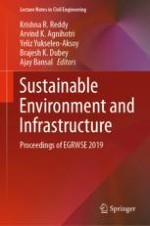2021 | OriginalPaper | Buchkapitel
Investigation of Dredged Sediments Reuse as Building Materials
verfasst von : Ahmed Benamar, Laila Mesrar, Frédérique Bourdin, Sébastien Brasselet
Erschienen in: Sustainable Environment and Infrastructure
Aktivieren Sie unsere intelligente Suche, um passende Fachinhalte oder Patente zu finden.
Wählen Sie Textabschnitte aus um mit Künstlicher Intelligenz passenden Patente zu finden. powered by
Markieren Sie Textabschnitte, um KI-gestützt weitere passende Inhalte zu finden. powered by
